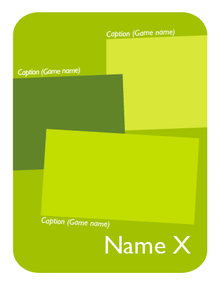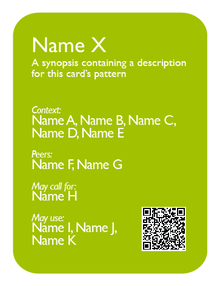Difference between revisions of "Suspicious NPC"
ValterAlves (Talk | contribs) m |
ValterAlves (Talk | contribs) m |
||
| Line 3: | Line 3: | ||
| candidatecard = Candidate Card | | candidatecard = Candidate Card | ||
| examplesintro = '''[Note: considering that this is still a candidate pattern, more examples then usually are presented, in order to provide a better support for the discussion.]''' | | examplesintro = '''[Note: considering that this is still a candidate pattern, more examples then usually are presented, in order to provide a better support for the discussion.]''' | ||
| + | | synopsis = NPC’s behaviours evidencing suspicion for the PC’s presence | ||
| rel-tag1=Context:<br> | | rel-tag1=Context:<br> | ||
| rel1=[[Awareness]] <br> | | rel1=[[Awareness]] <br> | ||
| Line 10: | Line 11: | ||
| rel3=[[Anticipation]], ...<br> | | rel3=[[Anticipation]], ...<br> | ||
| description = | | description = | ||
| − | |||
| − | [[Suspicious NPC]] | + | The representation of [[Suspicious NPC]] consists of small utterances (e.g. "Uh?!") or [[Dialogue]] (e.g. "I heard something...") that evidence that a NPC is hostile and has detected some sign of the PC's presence, which being confirmed would lead to [[Engagement]]. [[Suspicious NPC]] may fit or trigger an [[Anticipation]] phase. |
| + | |||
| + | In terms of [[Awareness]] of hostile NPC towards the PC, [[Suspicious NPC]] represents an intermediate state, between [[Unaware NPC]] and [[Seeking for PC]]. | ||
| + | |||
| + | [[Suspicious NPC]] usually works as a [[Beacon Locator]] of the NPC, in the sense that it contributes mostly for the player to become aware of a (nearby) offscreen NPC, who otherwise might attack furtively. | ||
| + | |||
| examples= | | examples= | ||
| ex1=<mt p="SuspiciousNPC" g="MGS4" altg="Metal Gear Solid 4" w="{{R16by9W}}" h="{{R16by9H}}"></mt> | | ex1=<mt p="SuspiciousNPC" g="MGS4" altg="Metal Gear Solid 4" w="{{R16by9W}}" h="{{R16by9H}}"></mt> | ||
Revision as of 00:03, 14 October 2011

|

| |
| The card's front face | The card's back face |
Candidate Card
Contents
[hide]Synopsis
| NPC’s behaviours evidencing suspicion for the PC’s presence. |
Relationships
Context:
Awareness ![]() .
.
Contrasts with:
Unaware NPC ![]() , Seeking for PC
, Seeking for PC ![]() .
.
May relates to:
Anticipation ![]() , ....
, ....
Description
The representation of Suspicious NPC consists of small utterances (e.g. "Uh?!") or Dialogue (e.g. "I heard something...") that evidence that a NPC is hostile and has detected some sign of the PC's presence, which being confirmed would lead to Engagement. Suspicious NPC may fit or trigger an Anticipation phase.
In terms of Awareness of hostile NPC towards the PC, Suspicious NPC represents an intermediate state, between Unaware NPC and Seeking for PC.
Suspicious NPC usually works as a Beacon Locator of the NPC, in the sense that it contributes mostly for the player to become aware of a (nearby) offscreen NPC, who otherwise might attack furtively.
Examples
[Note: considering that this is still a candidate pattern, more examples then usually are presented, in order to provide a better support for the discussion.]




